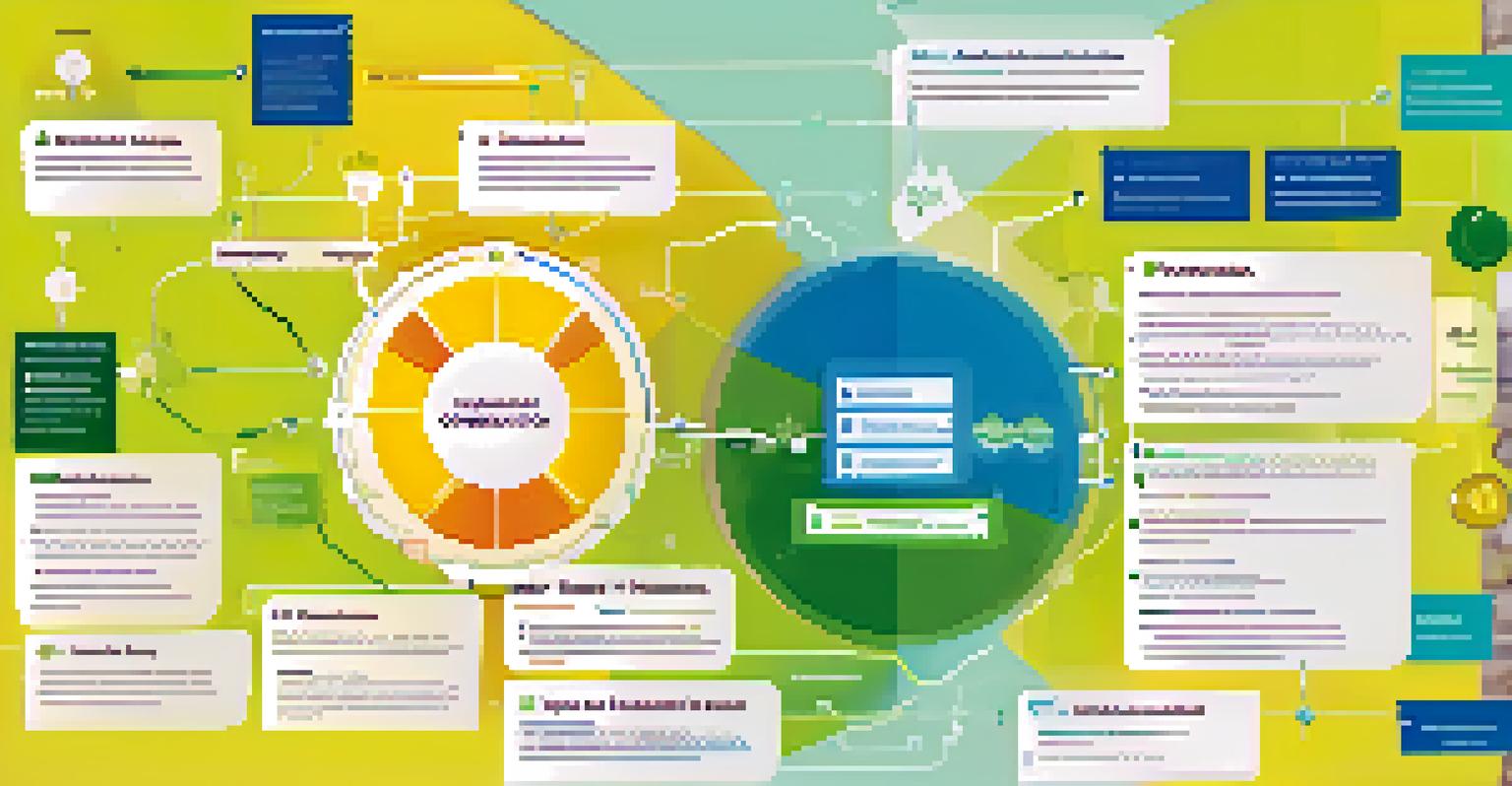Engaging Stakeholders in Sustainability Initiatives

Understanding the Importance of Stakeholder Engagement
Stakeholder engagement is essential for the success of sustainability initiatives. It involves actively involving individuals or groups that have an interest in the project, such as employees, customers, and community members. When these stakeholders are engaged, it fosters a sense of ownership and commitment to the initiative, leading to better outcomes.
Stakeholder engagement is not just a process; it's a partnership built on trust, transparency, and mutual respect.
Consider a company launching a recycling program. If employees are included in the planning stages, they are more likely to feel invested in the program's success. This investment can translate into proactive participation, which is crucial for achieving sustainability goals.
Ultimately, engaging stakeholders not only enhances the effectiveness of sustainability initiatives but also builds stronger relationships and trust within the community. This trust can lead to ongoing support for future initiatives.
Identifying Key Stakeholders for Your Initiative
The first step in effective stakeholder engagement is identifying who your key stakeholders are. These can range from internal stakeholders like employees and management to external ones such as customers, suppliers, and local communities. Knowing who has a stake in your initiative can help tailor engagement strategies effectively.

For instance, a local government may be a crucial stakeholder for a community-based sustainability project. Engaging with them early on can provide insights into regulations and community needs, ensuring that the initiative aligns with broader goals.
Engage Stakeholders for Success
Involving stakeholders fosters ownership and commitment, leading to more effective sustainability initiatives.
Mapping out stakeholders and understanding their interests and concerns can streamline the engagement process. This step ensures that all voices are heard and helps prioritize whom to engage first.
Creating a Clear Communication Strategy
A robust communication strategy is the backbone of stakeholder engagement. It should outline how information will be shared, the frequency of updates, and the channels to be used. Effective communication builds transparency and trust, which are vital for successful collaborations.
The greatest danger in times of turbulence is not the turbulence; it is to act with yesterday's logic.
For example, using both emails and social media can reach a broader audience, ensuring that all stakeholders are informed. Regular updates about the progress of sustainability initiatives can keep the momentum going and maintain interest.
Moreover, always be open to feedback. Encouraging stakeholders to share their thoughts can reveal new perspectives and ideas, ultimately strengthening the initiative.
Utilizing Collaborative Tools for Engagement
In today's digital age, utilizing collaborative tools can greatly enhance stakeholder engagement. Platforms like online forums, surveys, and project management tools allow stakeholders to participate actively and share their input in real time. These tools can create a sense of community and collective purpose.
For instance, a sustainability team might use a dedicated online platform to allow stakeholders to share ideas and comment on proposals. This not only fosters collaboration but also encourages creativity and innovation.
Develop a Strong Communication Plan
A clear communication strategy builds trust and keeps stakeholders informed about progress and updates.
Additionally, collaborative tools can help track progress and provide updates, ensuring stakeholders remain informed and engaged throughout the initiative.
Hosting Workshops and Interactive Sessions
Workshops and interactive sessions are excellent ways to engage stakeholders in a hands-on manner. These gatherings encourage active participation and provide a platform for stakeholders to voice their opinions and ideas. This can lead to more effective solutions that are tailored to meet the needs of all involved.
For example, a workshop focused on sustainable practices can allow participants to brainstorm and discuss potential challenges and solutions together. Such activities can stimulate creativity and foster team spirit among diverse stakeholder groups.
Moreover, these sessions can strengthen relationships, as participants get to know each other and build trust, which is essential for long-term collaboration.
Recognizing and Celebrating Contributions
Recognition and celebration of stakeholder contributions can significantly boost morale and motivation. Acknowledging the efforts of individuals or groups not only shows appreciation but also reinforces their commitment to sustainability initiatives. This can be done through awards, shout-outs, or public acknowledgment at events.
For instance, a company might highlight an employee's innovative idea for reducing waste during a team meeting. Such recognition can inspire others to contribute their ideas and foster a culture of sustainability.
Celebrate Contributions and Feedback
Recognizing stakeholder efforts boosts morale and encourages ongoing participation in sustainability efforts.
Additionally, celebrating milestones in sustainability efforts can create excitement and encourage ongoing participation. This reinforces the idea that every contribution counts and is valued.
Evaluating and Adapting Engagement Strategies
Regular evaluation of engagement strategies is crucial for their effectiveness. Gathering feedback from stakeholders can provide insights into what is working and what needs improvement. This adaptability ensures that engagement remains relevant and impactful over time.
For example, after completing a sustainability initiative, a company might survey its stakeholders to assess their satisfaction and gather suggestions for future projects. This feedback loop can guide the planning of subsequent initiatives.

By being open to change and willing to adapt strategies based on stakeholder input, organizations can enhance their engagement efforts and drive greater success in their sustainability initiatives.